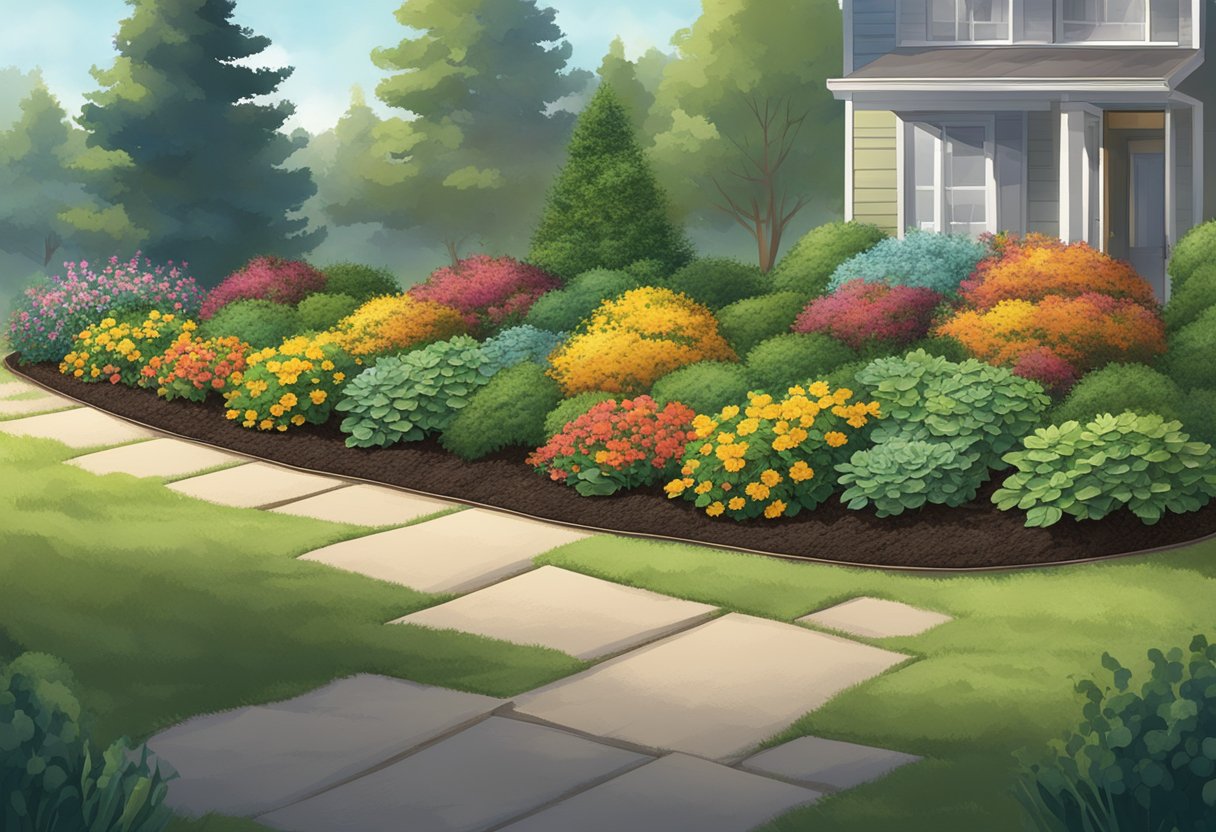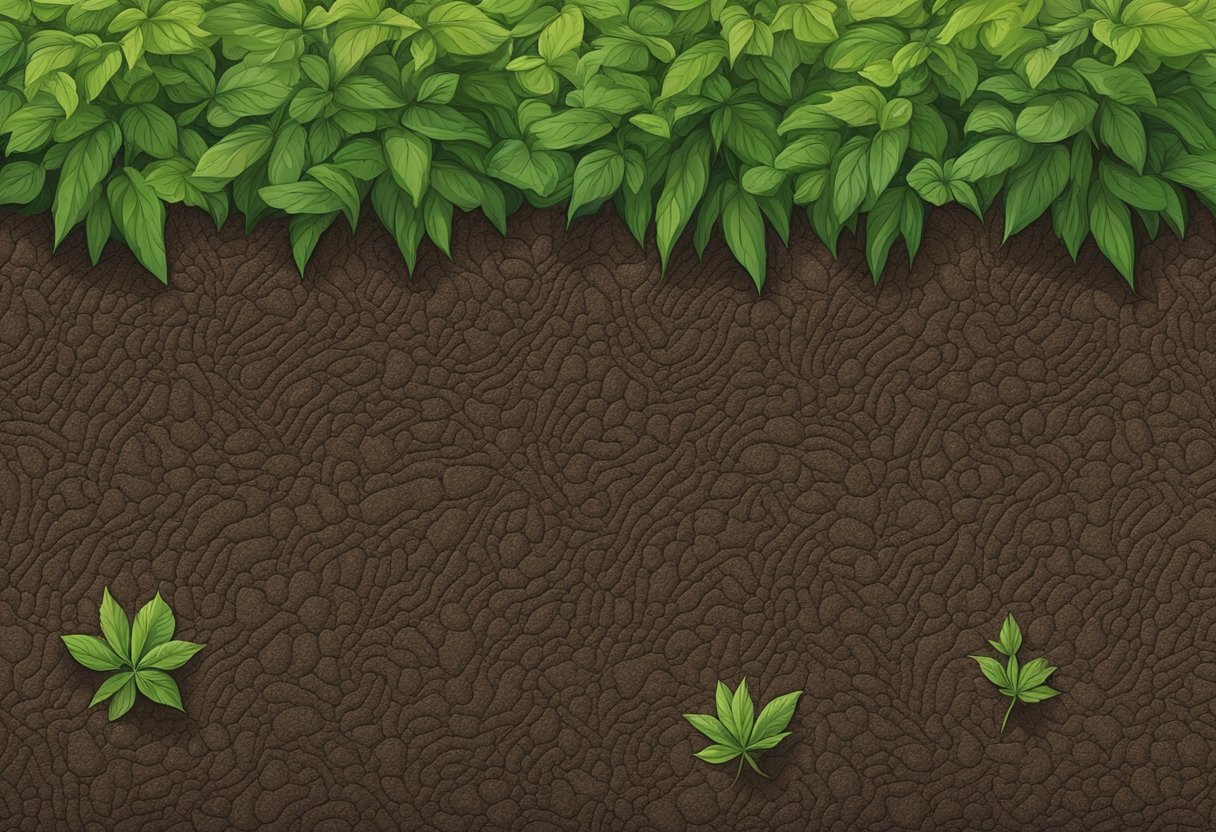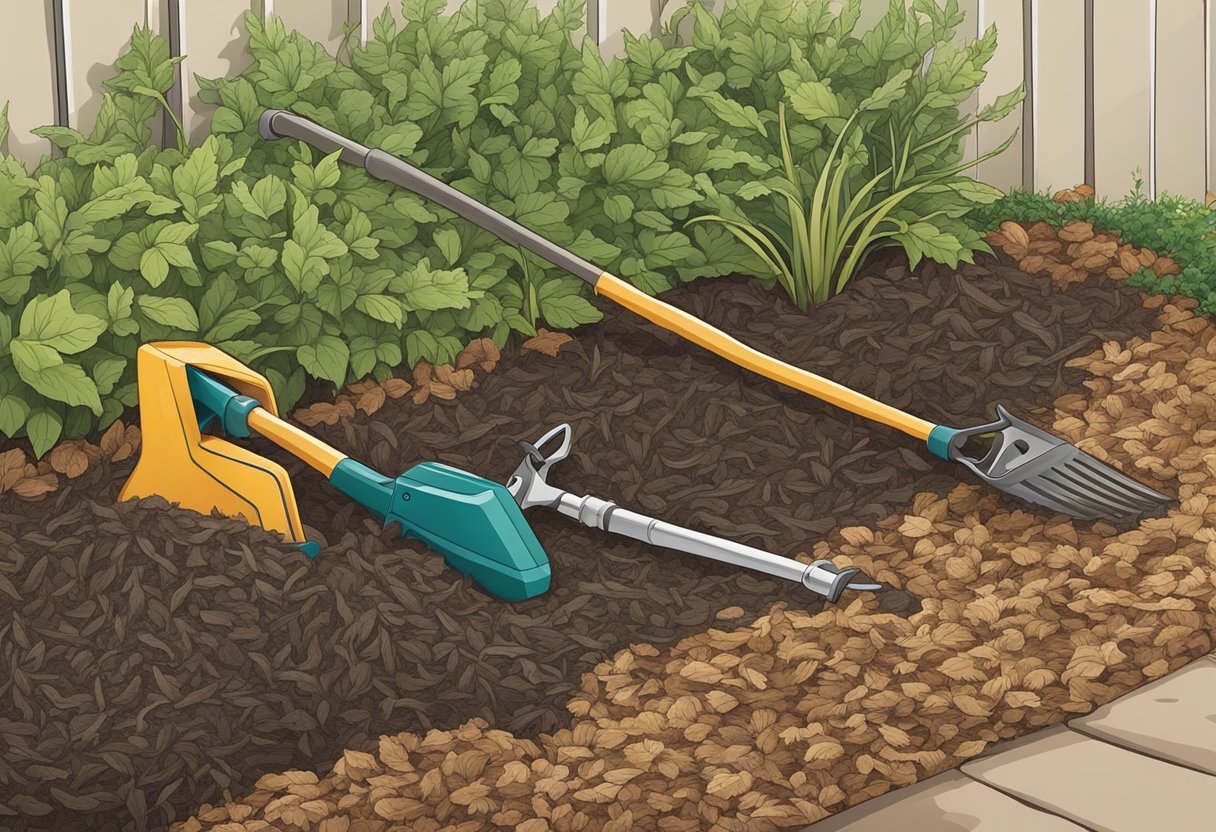As avid gardeners, we often grapple with the unwelcome appearance of weeds in our garden beds. The use of mulch is a common strategy with dual benefits: it not only enhances the aesthetic appeal of our gardens but also plays a role in weed control. When applied correctly, a thick layer of mulch can suppress weed growth by blocking sunlight, which is critical for the germination of many weed seeds.

However, it’s important to note that mulch itself does not kill existing weeds. To effectively manage these invasive plants, we may need to employ additional methods such as manual removal or the use of herbicides prior to mulching. Once a garden bed is cleared of weeds, applying a layer of mulch approximately 2 to 3 inches deep can help prevent new weeds from taking root by limiting the light exposure and creating a physical barrier.
It’s also worth considering the type of mulch we use, as certain organic materials can contribute additional nutrients to the soil upon decomposition. While there is no foolproof way to eliminate weeds entirely, our experience confirms that a well-planned mulching strategy can significantly reduce the time and effort we spend managing these persistent garden nuisances.
Mulch and Weed Control

In landscaping, we understand mulch plays a key role in weed suppression. Let’s examine how mulch effectively controls weed growth, impacts weed seed germination, and learn which types of mulch are most effective for weed control.
Benefits of Mulch for Weed Suppression
Mulch offers several benefits in our gardens, most notably the ability to prevent weeds from establishing. It acts as a physical barrier, blocking sunlight, which is essential for weed seed germination. By reducing the light reaching the soil surface, mulch effectively prevents the growth of weeds. Organic mulches like wood chips, straw, and leaves also contribute to soil health by gradually breaking down and adding nutrients.
- Block Sunlight: Suppresses weed growth by preventing light from stimulating weeds.
- Retain Moisture: Keeps soil moist, helping desirable plants but not weeds.
- Enhance Soil: Decomposes over time, enriching soil with organic matter.
The Role of Mulch in Weed Germination
We use mulch to disrupt the weed life cycle. A layer of mulch reduces the chance that weed seeds will receive the water, light, and nutrient conditions they need to sprout. Furthermore, mulches like cardboard and newspaper can act as a weed barrier cloth, creating a more formidable obstacle for weeds attempting to germinate.
- Germination Barrier: Mulch makes it difficult for weed seeds to germinate and reach the soil surface.
- Pre-emergent Strategy: Use mulch with a pre-emergent herbicide to halt weed development before it starts.
Types of Mulch and Their Effectiveness Against Weeds
Choosing the right type of mulch for weed control depends on our specific garden needs:
- Organic Mulch: Includes wood chips, bark chips, straw, leaves, and grass clippings. These natural materials decompose, adding nutrients to the soil.
- Inorganic Mulch: Stone, plastic, rubber, and landscape fabric are types of inorganic mulch that don’t enrich the soil but can be effective at suppressing weeds.
We utilize organic mulch for both weed control and soil enhancement or inorganic mulch for a longer-lasting barrier against weeds without the need for frequent replenishment.
Targeted Weed Management and Maintenance

When we approach weed management in our gardens, integrating targeted strategies ensures a healthy ecosystem. We balance chemical approaches with natural solutions to foster ideal growing conditions while limiting weed competition.
Herbicides and Mulching
In our gardens, the strategic use of herbicides can play a role in weed management. Pre-emergent herbicides prevent weed seeds from germinating, and when we apply these chemicals carefully, they protect perennials, shrubs, and trees from the competition that weeds present. Post-emergent herbicides, such as glyphosate, can be utilized for existing weeds but should be applied with precision to avoid damage to desired plants. Pairing herbicides with a layer of mulch can further suppress weed growth as the mulch provides a barrier that preserves moisture and soil temperature, making it tougher for weeds to thrive during hot summer days and periods of drought.
Cultivation Techniques in Weed Control
Cultivation with tools like hoes can be effective if we time it properly, ideally in early spring before weeds have a chance to establish deep roots. We utilize hand pulling for shallow-rooted weeds, and for those with rhizomes that are difficult to pull out, a thorough hoeing disrupts their growth. Ensuring garden tools are sharp minimizes soil disturbance, which can bring dormant weed seeds to the surface and contribute to erosion.
Mulch Integration with Other Gardening Practices
Integrating mulch into our gardening practices offers multiple benefits beyond weed control. Mulch, whether organic such as compost or inorganic like black plastic, aids in maintaining consistent soil moisture and temperature, which is crucial for the development of plant roots. It also breaks down, contributing organic matter and nutrients which feed soil microbes and foster a healthy ecosystem that is resilient to pests, diseases, and extreme weather conditions. We incorporate mulch into our vegetable gardens after setting transplants and around established plants to reduce competition for water and nutrients, thus promoting optimal growth and yield.